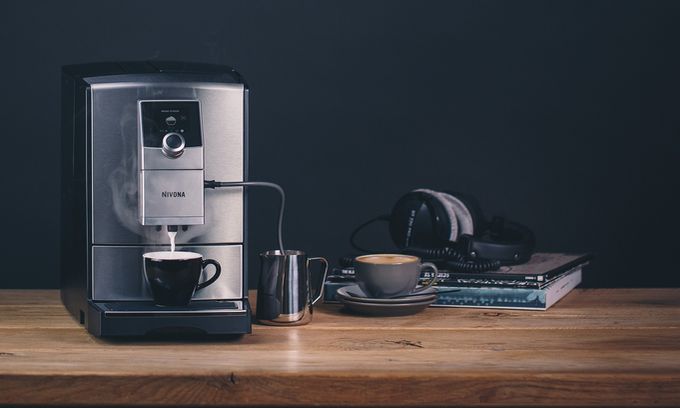Nivona Apparate, Nuremberg, Germany was founded in 2005 by engineers Peter Wildner, Thomas Meier and Hans Errmann with extensive experience in the development of coffee machines. Today company produces Nivona models on the Eugster Frismag AG factories in Switzerland and Portugal.
Simply put, eminent Swiss company Eugster/Frismag is OEM (original equipment manufacturer) for Nivona. Besides, it produces models under the Jura, Bosch and Melitta brands. Like Saeco, which makes models under the Saeco, Philips and Gaggia brands, Eugster/Frismag is today one of the industry leaders in the automatic coffee machine segment. But the third industry giant, Italian DeLonghi manufactures its coffee machines without their help in Italy, China, and the USA.
Despite the superb price-quality ratio, the popularity of Nivona models is lower compared to competitors. This is due to the company marketing strategy, which sells its products exclusively in specialized stores, actively using qualified sales consultants. Of course, this system has pros, but, unfortunately, it significantly limits the brand popularity.
Periodic renewal of model lines has long become one of the competition tools in the consumer electronics segment. Of course, Nivona is no exception, and annually expands the range of its coffee machines. As a result, each series contains updated and previous versions. Some models differ significantly from their prototypes of previous years. But sometimes the differences are minimal and more due to a tribute to tradition. At the same time, often the prices of new versions are even lower compared to previous analogues. Of course, this situation can slightly confuse the consumer. But their comparative review can simplify the choice.
Today Nivona produces 5, 6, 7, 8, 9 and 10 series of NICR CafeRomatica. This year, the company introduced the new NICR 550/ 560 and NICR 690/695.
NICR CafeRomatica 7th series
The updated 7th series was presented by the company a year ago. In turn, at the end of 2018, it replaced the previous 758 / 768 / 778 / 788 coffee machines, introducing 759 / 769 / 779 / 789 models. In fact, the list of minor differences includes:
– reduction of grinder noise level;
– NICR 756/759 has prewetting duration adjustment, which the company calls the Aroma Balance System;
– no automatic shutdown;
– new cup stand.
The plastic grating inserted into the metal cup stand protects its surface from scratches, which usually appear after 50-100 cycles.
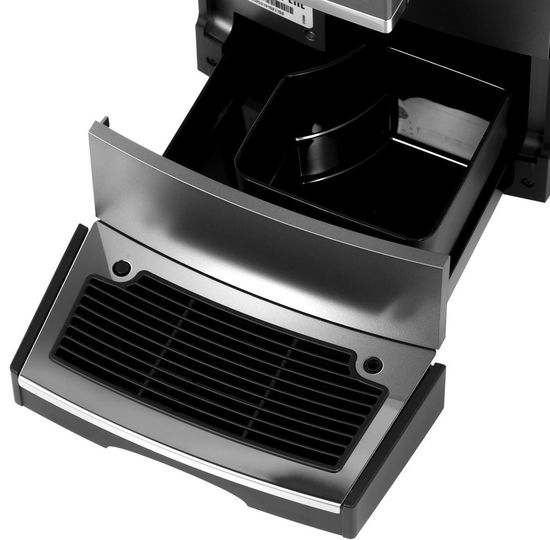
From March 2021, all models of the 7 series are produced only at the plant in Switzerland.
With the exception of color and finish, the differences between the series are also minimal (759 vs 769 vs 779 vs 789):
– coffee strength settings – 3/5/5/5;
– additional memory cells for ‘My Coffee’ – 1/1/1/5;
– cuplight – no/yes/yes/yes;
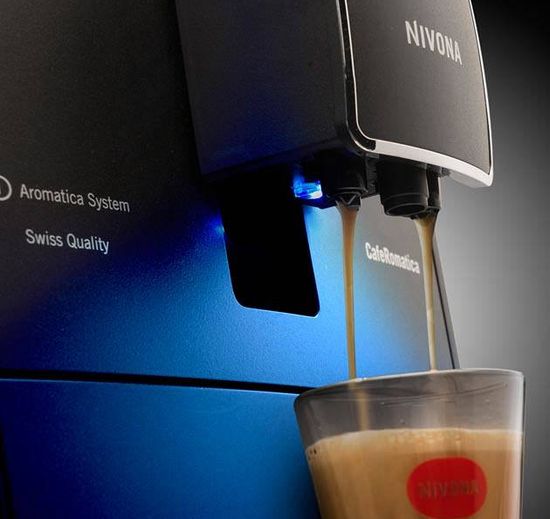
– optical sensor of coffee beans in the hopper – no/yes/yes/yes;
– metal cup stand at the top – no/no/no/yes;
– milk jug – no / no / no / yes.
The prices of these models vary ~ € 900.
The updated 7th series includes:
– Nivona CafeRomatica NICR 790 – completely black model without cuplight, without additional noise insulation, without rear wheels on the bottom and coffee bean sensor in the hopper (~ € 790);
– Nivona CafeRomatica NICR 795 – dark gray titanium look front panel;
– NICR 796 – white front panel;
– NICR 799 – metal front panel and metal cup stand at the top.
Unlike the NICR 790, all models have a cuplight, wheels, sensor, and additional noise isolation. Their prices vary ~ € 800.
Nivona CafeRomatica NICR 79x platform
Probably, the developers compiled the design of new versions between the series. Now the 7th series is similar to the previous 8th series. In turn, the new NICR 695 looks like the previous 7 series.
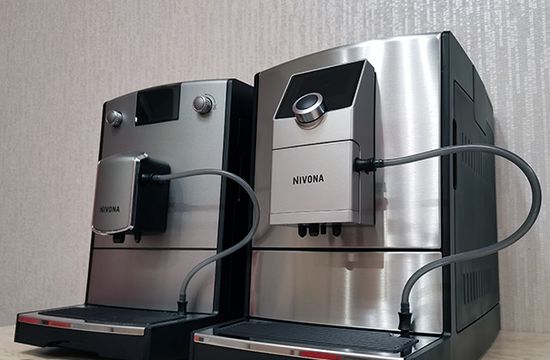
The dispensers and control panel in the 7th series are combined into a single module, which moves up and down the front panel.
Unlike the previous upgrade of the 7 Series, the list of recent improvements is more substantial. In addition to the design, it includes updated software, a new control panel and a height-adjustable module that combines dispensers with a cappuccinatore. Its adjustment range is designed for cup heights up to 140 mm.
The control panel includes a 2.56-inch (6.5 cm) color display and a push-dial. The only on/off button is located on the left side. This unprecedented easy controlIn once again proves the virtuosity of the developers in terms of max usability.
The platform has not changed and includes:
– steel conical Rögelein grinder 043 coffee grinder with three degrees of grinding (the adjustment lever is located behind the right door);
– 15-bar pump Sysko SPX.H100;
– flow-through 1450-W thermal block;
– removable brewing unit (up to 16 grams of ground coffee);
– 250g bean hopper, 2.2 liter water tank and coffee grounds container for 10-12 servings;
– automatic cappuccinatore integrated with a dispenser with two coffee outlets and a separate water nozzle. In addition, the module has a hose for supplying milk from any container, including, for example, a tetra-pak;
– additional soundproofing the pump (vibroisol on three sides) and coffee grinder (vibroisol between the bean hopper and the motor). As known, a vibroisol is made of porous material and effectively absorbs vibrations.
Milk frother
Of course, the optimal milk froth temperature in coffee and milk drinks depends on personal preference. Traditionally, it varies in the range of 55-65°C, but not more than 70°C, when milk begins to break down into lactose with a sour taste. Unfortunately, froth milk in inexpensive models is often not hot enough.
The developers took this problem seriously and significantly improved the milk frother design. By analogy with cappuccinators in NICR 820/821/825, the new module consists of five parts instead of four.
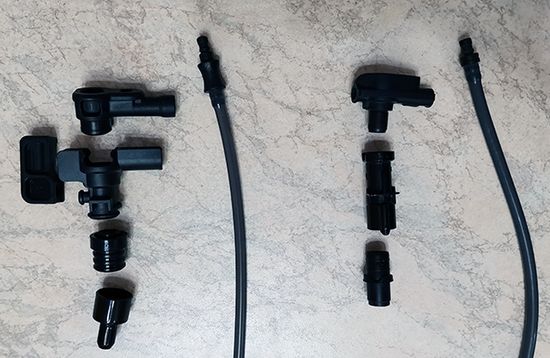
The fifth part divides the steam into two streams. Part of the steam is directed to the milk from above, and the other – from the side. In fact, steam enters the milk stream from above and from the side, raising the milk foam temperature to 63-64°C.
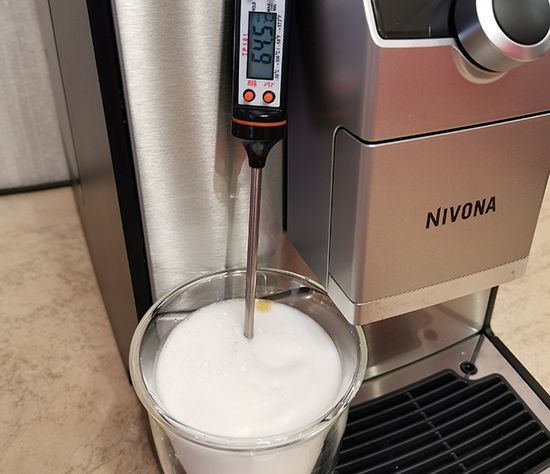
After mixing with hot espresso, the cappuccino temperature in the cup reaches 66-67°C.
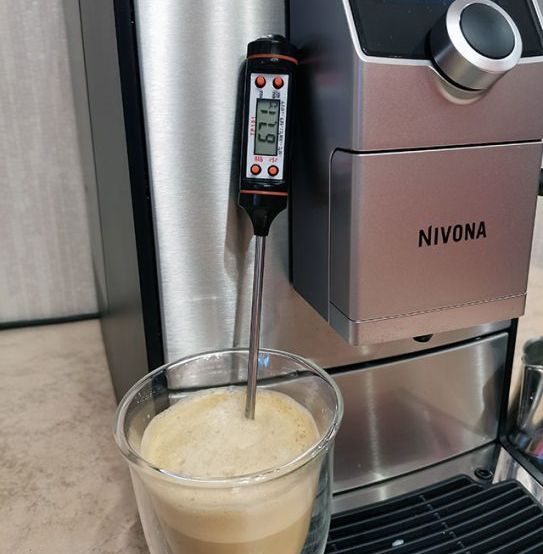
As known, the temperature of a classic cappuccino varies in the range of 65-70°C. For comparison, the temperature of milk drinks in the previous Nivona CafeRomatica NICR 7xx does not exceed 60-62°C, which is lower than recommended.
Updated software and controls
The canonical cappuccino and the waiver of the hydraulic circuit flush confirmation requirement are the main improvements in the software.
As known, making a classic cappuccino involves adding frothed milk to a cup of espresso. About five years ago, the ‘expresso + milk’ sequence was supported only by premium models. Like a latte macchiato, most coffee machines pour milk into the cup and then add the coffee on top. Previous models of the 7 Series also offer only this algorithm.
Perhaps, for some, the relevance of this problem may seem doubtful. But the drink taste really depends on the order in which the ingredients are added. Moreover, this difference exceeds the influence of many basic settings, including, for example, cooking temperature or grinding. Of course, manual preparation in two steps ‘coffee + milk’ solves this problem. But, in fairness, people pay money for automation, and the absence of a ‘one-touch cappuccino’ significantly reduces this bonus.
Unfortunately, default the new NICR 790/795/796/799 come with the previous ‘cappuccino’ program algorithm. Activating an updated program requires changing them.
The elimination of obviously redundant check for the hydraulic circuit at power-up was another significant improvement. In fact, today the company has eliminated this annoying option in all models except for the NICR 520/525/530.
In addition, the developers left only one push-button dial, which provides navigation through the menu, program selection, its settings and launch.
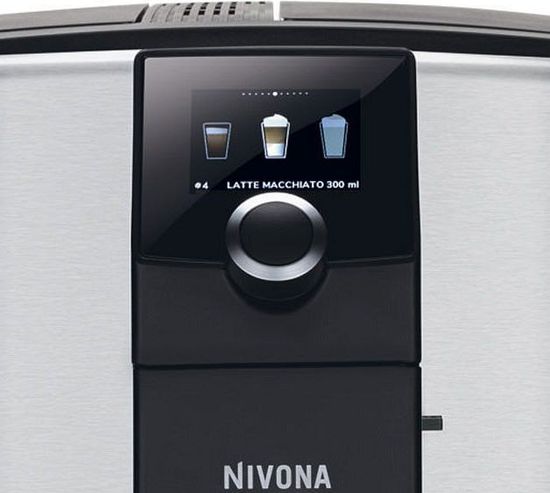
For example, pressing it for a few seconds activates the recipe programming mode and switches between menu levels. Incidentally, the flagship 9 series offers similar controls. In general, the developers once again confirmed the superb usability of their models, providing the functionality of an automatic coffee machine with just one dial.
Main programs
– espresso (default 40 ml, mid temperature 2 out of 3, mid strength 3 out of 5, pre-wetting with a pause of 1 sec) – adjustment range 20 – 240 ml in 10 ml increments;
– coffee (an identical recipe with a much larger volume, known as Lungo, default 120 ml at medium settings) – 20 – 240 ml in 10 ml increments. The minimum volume setting is suitable for preparing ristretto;
– americano (classic americano, default 40 ml espresso, then 80 ml water) – adjustment range for each ingredient is 20 – 240 ml. But the total volume cannot exceed 360 ml. For example, choosing 240 ml of water limits the espresso to 120 ml. The setting step is 5 ml;
– cappuccino (non-classical – the coffee machine pours milk foam into the cup and adds coffee; by default 160 ml milk + 40 ml espresso) – adjustment: milk 40 – 240 ml, espresso 20 – 240 ml. Total drink volume limit and adjustment step are similar to ‘americano’.
This program has an additional modifier for choosing the sequence of adding ingredients. The choice of ‘coffee’ corresponds to the classic ‘coffee+milk’ sequence.
Unfortunately, the program does not support the option to adjust the milk foam height and always froths milk at max intensity;
– latte macchiato (by default 40 ml milk +200 ml milk foam + 60 ml espresso) – adjustment: milk and foam – 20-240 ml, espresso 20 – 240 ml. Total drink volume limit and adjustment step are similar to ‘americano’ and ‘cappuccino’. But a separate adjustment of milk and foam provides adjustment of the milk foam height. Of course, this is more important for latte and flat white recipes, but their coffee machines do not offer.
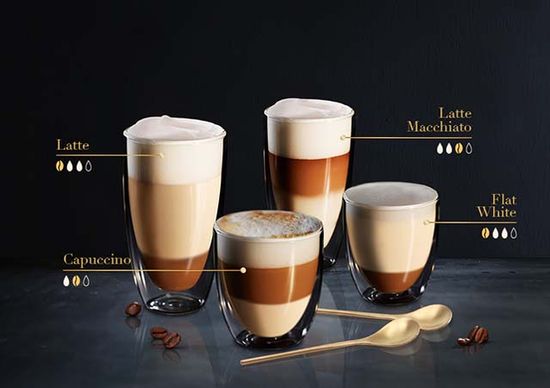
Key features
In addition, coffee machines offer milk foam / hot water and memory for 5 user programs in the ‘My coffee’ submenu:
– milk foam (150 ml – 100 ml of milk + 50 ml of foam) – 40 – 240 ml in 10 ml increments;
– hot water (150 ml) – 50 – 500 ml in 25 ml increments;
– up to five additional recipes in ‘My coffee’ are created from basic programs with their own settings. The user can assign names to them, but selecting letters using dial is not very convenient.
Except milk and water, all recipes support:
– five coffee strength settings. However, this setting is different for milk coffee drinks with first delivery of milk into the cup from other recipes. In particular, they use ~ 7 / 8 / 9 / 10 / 11 grams of ground coffee per serving vs 7 / 9 / 11 / 13 / 15 grams in programs with first coffee dispensing;
– three coffee tablet pre-wetting settings, including Dynamic without pre-wetting, Constant (1 sec), and Intense (more than 1 sec for a richer taste);
– three settings for the temperature of the coffee component.
Like previous models, the new NICR 79x supports iOS and Android smartphone control via built-in Bluetooth and the Nivona app.
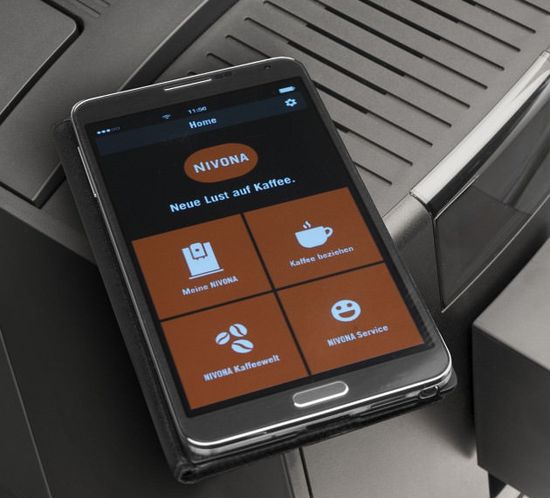
The discussion about the advisability of this option in coffee machines has been going on for several years. Indeed, remote control requires registration, the connection lasts several minutes, sometimes apps do not work correctly. But, to the delight of progressives, companies are quickly improving them. DeLonghi Coffee Link app and Jura JOE app perfectly illustrate this trend, expanding the coffee machine functionality with new popular options. Therefore, the improvement of smart functionality by Nivona looks quite adequate.
Conclusions
Overall, the company has successfully improved the 5, 6 and 7 series by introducing new NICR 550/ 560, mid-budget NICR 690/695, and NICR 79x.
NICR 79x vs NICR 756 / 759 / 769 / 779 / 789:
– one push-dial on a single dispenser module vs two dials and a separate display;
– the new design of the 5-component frother raises the temperature of the cappuccino to 67°C vs 62°C with the previous 3-component frother;
– support for the classic cappuccino recipe ‘coffee + milk on top’;
– there is no requirement to confirm flushing when switching on.
A short list of controversial aspects includes:
– excessive force when pressing the dial sometimes shifts the dispenser module down due to the tilt of the control panel;
– the float black color on the drip tray of the same color is worse visualized;
– different weight of the coffee tablet for the same coffee strength depending on the order of dispensing into the cup.
To be fair, this problem only occurs to lovers of strong latte macchiato.
Moreover, the price of updated models is even lower. For example, some retailers are offering the NICR 790 ~ € 800 vs € 900 of the previous NICR 769 / 779 / 789. As a result, the new NICR 79x has a superb price-quality ratio, which promises excellent marketing prospects.
The video shows the new coffee machine in action.
